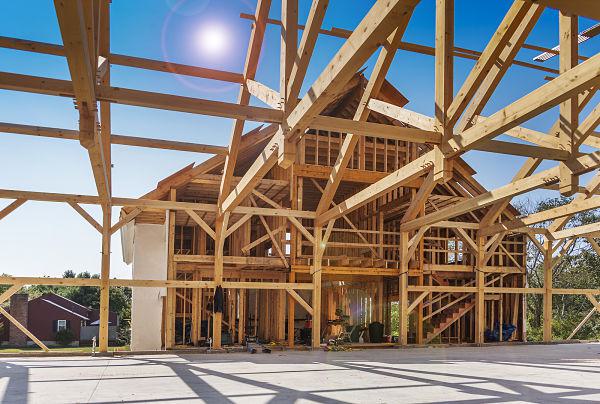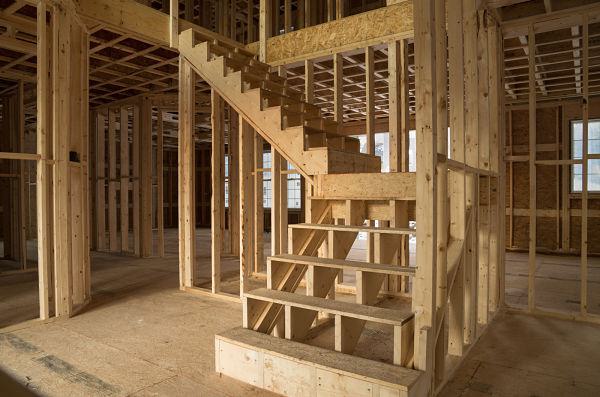Home > Blog
Read Time — 6 minutes
Why Going Paperless Is the Smartest Move Your Residential Construction Business Will Make This Year

There is no question that 2020 was not the year any of us were expecting. While you might have started the year thinking that yes, you should probably consider paperless document management at some point, now is the time when your residential construction business can significantly benefit from moving your documentation to the cloud. Here’s how.
Public Health Preparedness
While you probably have spent time planning for the safety of your crews on the job site, it’s likely that protecting them from a virus didn’t enter your thinking. However, a pandemic will change things – and there’s no clear-cut window for how long concerns like social distancing will remain in play. It can only benefit you – and your teams – to build preparedness into your processes now, to use into an uncertain future. For instance, paper-based documentation requires a series of shepherds: Someone has to physically carry around the various forms, job requirements, blueprints, work orders, estimates, contracts, checklists and change orders; fill them out, or take them to the right person to get them filled out; make sure someone else signs off on them; and return them to the office, where someone else will file them. Other important papers, like invoices, have to be processed by hand and either delivered in person or sent by snail mail. This is not only inconvenient and an inefficient use of time; in today’s world, it runs counter to guidelines that people should limit their contact with others whenever possible and maintain social distancing when it’s not. In a paperless system, however, every worker accesses the same online version of the paperwork and updates their own piece. Once a job record is updated by anyone (no matter where they are), the change is saved automatically, is available immediately for anyone to see, and is digitally archived with the job – no shepherding needed.

The Complete Record, All the Time
Let’s dig deeper into inefficient uses of time. Part of the problem with traditional documentation in residential construction is that it has a cascading effect – it can either keep you moving swiftly downstream, or it can drown you. Approvals are required to move any project from phase to phase. When contracts are signed, work can start; when change orders are accepted, work can continue. A mobile document management system makes it easy to share all the details of any project with those who are waiting on the information. For example:
- Materials lists can be updated on the fly and immediately shared with field crew.
- Automatic notifications can update crews and other subs with crucial details that continue project momentum.
- Teams can save photos and videos into the job record as the work is done on site.
- Supervisors and builders can easily track progress; as soon as a phase is complete, online status is posted.
- Approvals and responses are accelerated so the job stays on schedule.
Speaking of builders, what happens today when one calls for an update and you don’t have the latest piece of paper sitting in front of you? It’s often the next day before you can get back to them. However, when your documentation is “in the cloud,” any office employee can quickly look up the job online and answer the question. No one has to drop by the office or call around to find a supervisor. And with standard filenames, you can search for information in seconds. Finally, when all your job details are online, your document management system can interact directly with your other job-critical software such as QuickBooks, Sage 300CRE, Viewpoint Spectrum, ADP Workforce Now, or other major finance and payroll software. When your systems are synced, you can quickly and easily:
- Generate invoices and ensure financial actions aren’t delayed by a backlog of paperwork.
- Accurately produce profit and loss reports for each job using invoiced totals and including material and labor costs.
- Pay your crews with no chance for data errors to be introduced.

What Paperless Can Mean
Residential electric contractor L&M Electric has found that BOLT’s paperless and mobile solution not only keeps their entire organization fully informed in real time, but it has established true accountability, from management through every subcontractor and even the builders. “Paper service tickets were going out the door with technicians every day, and it was always a tossup whether or not they would get returned the following day,” noted L&M Electric CEO Kevin Lee. A service manager was tasked every morning with going through the mountain of tickets, sent out and returned, and trying to reconstruct exactly what work had been undertaken and completed the previous day. Operationally, that meant the service team was always at least 24 hours behind – and that delay had the potential to create credibility issues with any builder at any time. “Before Bolt and its documentation capabilities, you would have seen a fair amount of back charges in our financials. Now those are drastically decreased,” Kevin said. “We appreciate the ability to set the precedent that L&M Electric maintains verifiable proof of work done – accurate documentation, photos and even videos. And that precedent of accountability has meant tens of thousands of dollars in profit for our company.” L&M Electric is confident that simply using Bolt Software has increased their profits by more than $85,000 a year. In addition, they have been able to service an additional 350 homes per year, which has increased revenues by more than $2 million.
What Does Not Changing Cost?
But just for a minute, let’s focus not on how much more your residential construction business could be making with a paperless system; let’s look at what not going paperless is already costing you. Keeping up with your current paper-based documentation isn’t just confusing and tedious, it’s expensive. The Bureau of Labor Statistics has estimated that spending just one hour a day dealing with paperwork costs construction companies an average of $9,000 a year! If you’re already investing that kind of cash (or more) into a system that doesn’t completely meet your needs, and your business stands to make significantly more money with a paperless mobile documentation system, now really is the time to find out how easy it could be to move to Bolt software. Contact us to learn more.



